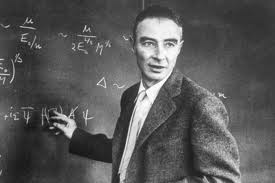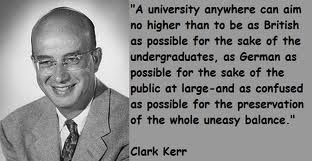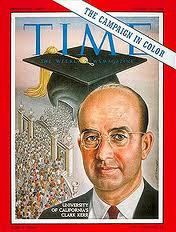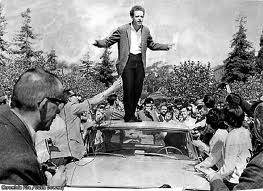Paranoid Ideologues
Monday, November 12th, 2012Subversives: The FBI’s War on Student Radicals and Reagan’s Rise to Power, Seth Rosenfeld, 2012
This is the story of two mad ideologues, J Edgar Hoover and Ronald Reagan, and their all out, illegal, long term war on UC Berkeley. It is based on Rosenfeld’s 30 year battle via the FOIA involving five different lawsuits to compel the FBI to release documents (finally totalling 300,000 pages) from FBI files for UC Berkeley faculty, administration, students, regents, FBI spies, and the Reagans. It reveals FBI abuses going far beyond those uncovered in the Church committee hearings of 1975.
J Edgar Hoover grew up in a Jim Crow all white section of Washington D.C. becoming a third generation Federal Government bureaucrat. He earned a law degree at George Washington University in 1916 (he never served in WWI) and joined the justice department. His strident anti-communism and disregard for the law evidenced itself early when he ordered thousands of communists arrested without trial in 1920. He managed to deport more than 500 to Russia before the department reigned him in for his disregard for constitutional rights and legal procedure.
He was to continue this practice throughout the rest of his life and the life of the FBI that he directed from 1924 til his death in 1972. The FBI acquired its reputation from its activities during prohibition and the great depression when a number of high profile bank robbers was captured. Hoover was never much interested in organized crime and WWII gave him the opportunity to focus on subversives under an order from FDR. Hoover was to broadly interpret this order and no subsequent President ever canceled the order so Hoover continued it until his death.
Under the order Hoover believed he was authorized to develop and maintain a list of individuals who, in the event of a “national emergency” would be rounded up and detained without trial or any legal proceeding whatsoever. This list ballooned to thousands of individuals many of them associated with UC Berkeley. Hoover ordered that upon his death, all files kept in his office be destroyed and his wishes were carried out destroying the key central evidence for this widespread illegal surveillance program. Hoover routinely ordered his agents to break into offices and homes illegally to photograph files and collect evidence. While there they could plant bugs and tap phones. This practice, going far beyond anything Nixon did at Watergate, was routinely carried out throughout Hoover’s FBI tenure. Hoover knew that none of this information could be admitted in any legal proceeding but it could be used to intimidate the victims or be carefully and secretly leaked to trusted journalists and politicians for their own use in smearing or ruining rivals or political “enemies”.
Hoover was not told about the Manhattan project but did focus a lot of attention on the Lawrence Laboratory at UC Berkeley to determine if Russian spies had been able to penetrate the labs to gain secrets. In typical Hoover fashion, he determined, with no evidence whatever, that Robert Oppenheimer, father of the atomic bomb, was not to be trusted and that he must have leaked information to the enemies. Oppenheimer had been approached by spies and delayed reporting these encountered which caused the AEC to withdraw his security clearance after the war thus effectively ending his career. Hoover’s illegal surveillance meant that actual spies could not be prosecuted. The only victim of Hoover’s methods at UC Lawrence Laboratory was Oppenheimer.
Reagan Testifies at HUAC Hearing 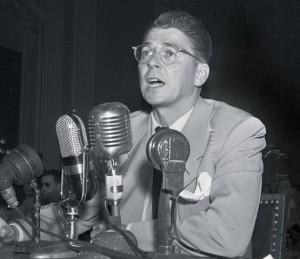
Ronald Reagan came to Hoover’s attention in 1947 when Reagan and his then wife Jane Wyman secretly named 10 Hollywood actors as known communists. Reagan went on from there to provide the FBI secretly with information from the Screen Actors Guild files while he was president. In this way, Reagan undermined the careers of many in Hollywood and helped enforce the black list.
The next major character in the book is Clark Kerr, Chancellor of UC Berkeley and President of the UC system. Kerr had developed a reputation as an effective mediator in labor disputes and brought this skill to bear during the loyalty oath crises where a number of distinguished professors refused to sign out of principal and were fired in 1950. The State Supreme Court ruled the oath invalid in 1952 and Kerr worked to get professors who wanted to return reinstated. It was this action that got Kerr named Chancellor of Berkeley and later President of the UC system where he oversaw the development of a new master plan in 1960 to enable the three tier system (community colleges, state universities, and 8 world class universities) to expand to accommodate the baby boom generation.
The bulk of the book is an account of UC Berkeley in the 1960’s and its ever escalating campus demonstrations and strikes and the reactions of Hoover and politically ambitious Reagan to these events. Rosenfeld dates the start of this era from the House Un-american Activities Committee (HUAC) hearing at City Hall in San Francisco in 1960. HUAC chose SF because California was the most supportive state for their activities and SF was home to Heart’s SF Examiner and its conservative reporters.
Students at UC Berkeley, Stanford, and SF State planned a demonstration at the Hearing and thousands showed up to occupy the City Hall rotunda. The students sang loudly in the echoing rotunda to disrupt the hearing and on the final day a hot tempered Irish cop ordered fire hoses be turned on the students to force them to leave. Some cops started beating the exiting students and one beaten student was arrested and charged with instigating a riot by attacking a policeman. SF Examiner reporter Ed Montgomery fabricated and printed a story about how this student had vaulted the barriers, grabbed a policeman’s club and assaulted him with it instigating the subsequent riot and police reaction with the fire hoses. Hoover, who had long cooperated with the HUAC saw an opportunity to capitalize on the event and ordered his agents to prepare a brochure entitled “Communist Target–Youth” claiming that communist instigators were responsible for the riot. 300,000 copies were distributed to right wing groups. Right wing groups also prepared a film supporting Montgomery’s account of the event. Unfortunately the trial of the student was a total disaster for the prosecutors. Montgomery refused to testify since he had made the whole story up. Defense attorneys demonstrated via photos that the arrested student was on the other side of the rotunda from the cop, that the cop had actually slipped on water from the hoses, fell, and injured himself. The student was acquitted and Hoover was publicly embarrassed for the many falsehoods in the FBI bochure. Hoover was determined to punish UC Berkeley for this embarrassment.
The next event at UC Berkeley was the demonstration that started the Free Speech Movement when police drove a car onto Sproul’s Plaza to arrest a man for distributing leaflets. Students surrounded the car and student Mario Savio jumped on the car and addressed the students for the first time. Mario Savio was a troubled genius who stuttered in normal speech but was a brilliant orator before a crowd. He had just returned from a summer helping to register black voters in Mississippi during the civil rights movement in 1964. His training in Gandhi’s non violence methods and experience in Mississippi were to leave lasting impressions on Savio. He was in the Plaza with the others to watch what happened but suddenly got the impulse to address the crowd. Savio was to be a part of almost every demonstration from FSM to the anti Vietnam war protests to demands for ethnic studies to the People’s Park demonstration in 1969 where police shot and killed one bystander, blinded another, severely injured others, and beat the protestors they arrested while in jail. A police helicopter dropped tear gas on the Plaza which quickly spread to much of Berkeley including hospitals, schools, and private homes. Savio died in 2006 and is remembered by a plaque on the stairs in Sproul’s Plaza. The FBI spent enormous resources tracking a restless Savio so that he could be picked up during a “national emergency”.
Building People’s Park 1969 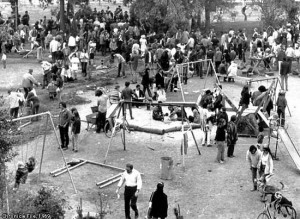 Mario Savio
Mario Savio 
Reagan saw the unrest at UC Berkeley as his political opportunity in 1966 when he ran for Governor of California against 3 time incumbent Pat Brown. Hoover was happy to provide Reagan with FBI information on faculty, students, regents, and Kerr who Hoover hated. Making UC Berkeley and its communist controlled demonstrations a major part of his campaign, Reagan soundly defeated Brown and secretly received the FBI at the governors mansion first thing upon taking office. Reagan’s past association with two banned groups would have precluded him from getting a security clearance as regent at UC but Hoover and the FBI hid the information to assure his clearance. How ironic that progressive Oppenheimer would lose his clearance and end his career thanks to the FBI and Reagan would get his only with the assistance of the FBI. Ideology trumps everything. As his first acts in office Reagan proposed that UC students should pay tuition for the first time in history and a conservatively stacked board of regents fired Kerr at Reagan’s insistence. Thus began the decline of the UC system, the envy of the world.
Rosenfeld promoting his book talked a lot about Richard Aoki, a WWII Japanese internee and veteran who acted as an FBI informant and purportedly supplied guns to the black panthers. Aoki denied both charges and we don’t know if the guns were an early FBI sting operation. A better work on Reagan, Nixon, the FBI and the black panthers is reviewed. Today’s FBI seems to utilize sting operations as its primary method in the “war on terror”. In their latest, they offered to provide a deadly drone to a hapless Muslim.

